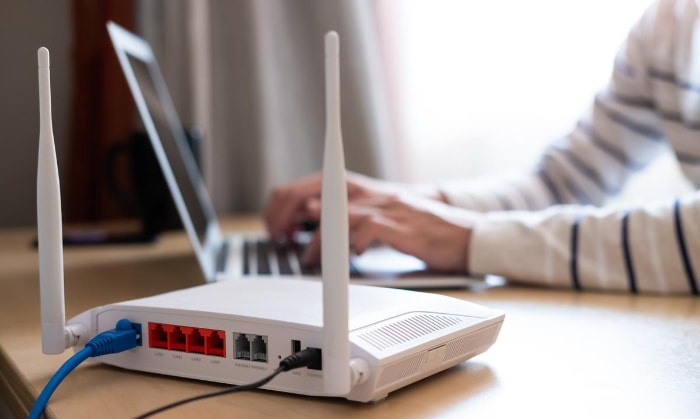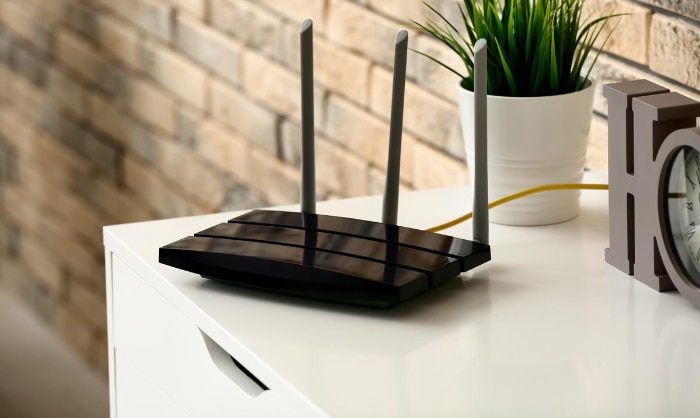Difference Between WiFi and Internet: From Basics to Beyond

WiFi and Internet are two terms that have become integral to the modern lexicon, often used interchangeably by many. While both are essential components of our digital world, they are not synonymous.
Grasping the distinction between them is not just a matter of technical accuracy; it’s about understanding the very fabric of our digital connectivity. This article aims to shed light on these differences, helping readers navigate the intricate web of technology with a more informed perspective.
Whether you’re a tech enthusiast, a curious soul, or someone just trying to troubleshoot a pesky connection issue, this guide is for you. Dive in and let’s demystify the world of WiFi and Internet.
Basic Definitions
In our journey through the digital realm, understanding fundamental terms can greatly enhance our grasp of the bigger picture. Here, we define core concepts that often get used interchangeably but have distinct meanings and implications.
WiFi (Wireless Fidelity)
WiFi, often referred to as Wireless Fidelity, is a wireless networking technology that allows devices such as computers, smartphones, tablets, and smart home devices to communicate with one another. Home WiFi setups, in particular, enable these devices to connect to the internet within the confines of a household. It operates by sending and receiving data over radio waves.
The standards and specifications governing WiFi are denoted by the IEEE 802.11 series, ensuring compatibility and interoperability between different wireless devices.
Internet
The Internet is a vast global system of interconnected computer networks. Using the Internet protocol suite, often known as TCP/IP, these networks communicate and exchange information.
It’s the digital highway on which data travels, connecting computers worldwide. From its origins as a research project in the 1960s to its current status as an integral part of daily life, the Internet has revolutionized the way information is shared, services are offered, and communication is conducted.
Interrelationship Between WiFi and Internet
While they are distinct in their functions, WiFi and the Internet are closely interrelated. WiFi provides a means for devices to connect wirelessly, often within a local area like a home or an office.
This connection can then be used to access the broader Internet. Conversely, the Internet represents the vast digital ecosystem that the WiFi-connected devices tap into, offering a plethora of information, services, and resources.
Primary Differences
While terms and technologies might seem to overlap in our daily usage, diving deeper into their characteristics reveals stark distinctions. Highlighting these differences not only clarifies misconceptions but also aids in their optimal utilization.
Connection Method
WiFi offers a wireless mode of connection, usually within a limited range. This means that devices can connect to the Internet or each other without the use of physical cables within the reach of a particular WiFi signal.
On the other hand, the Internet can be accessed through multiple means, not limited to WiFi. These might include wired connections such as Ethernet, fiber-optic links, or even mobile data.
Scope and Coverage
WiFi typically has a localized scope. This implies that its reach is often confined to places like homes, offices, cafes, or specific public areas. The signal strength diminishes with distance, and physical barriers like walls can also impact the connection.
The Internet, contrastingly, has a global reach. It’s a vast network that spans across countries and continents, connecting billions of devices.
Function and Purpose
The primary function of WiFi is to provide a wireless medium for devices to connect and communicate within a specific range. This might be for sharing files, streaming media, or accessing services on local networks without the need for wired connections.
The Internet, meanwhile, exists to give access to an extensive network of information, resources, and services. It’s a global infrastructure that facilitates a multitude of online activities, from browsing websites and sending emails to streaming videos and conducting e-commerce.
Dependency
It’s important to note that while WiFi can exist without providing access to the Internet, the inverse isn’t necessarily true. One can set up a WiFi network for local file sharing or device communication without it ever being connected to the Internet.
However, if one wants to access the Internet via WiFi, an active Internet connection from an Internet Service Provider (ISP) is a prerequisite.
Illustrative Examples

Sometimes, abstract concepts and differences are best understood when presented through relatable scenarios. These illustrative examples aim to shed light on the intricacies of WiFi and the Internet, making them tangible and easy to comprehend.
Scenario of Having WiFi but No Internet
Imagine settling into a cafe, eager to get some work done. You connect to the cafe’s WiFi, and the connection icon confirms you’re connected.
However, when you try to open a webpage or send an email, nothing works. This situation illustrates having a WiFi connection without an active Internet connection.
The devices are connected to the local network (the cafe’s router, in this case), but the router itself isn’t successfully connected to the broader Internet.
Accessing the Internet without WiFi
Consider you’re at an office where all computers are connected using Ethernet cables. There’s no wireless signal, yet you’re able to browse the web, download files, and send emails.
This scenario highlights that the Internet can be accessed without WiFi. Here, a wired connection, namely Ethernet, provides the path to the Internet.
Localized File Sharing Over WiFi
A group of students gathers to work on a project. They need to share files but don’t want to use the Internet to avoid data consumption.
One of them sets up a WiFi hotspot on their laptop, and others connect to it. They can now share files between their devices using tools designed for local sharing, even if the hotspot provider doesn’t have an active Internet connection.
This exemplifies the use of WiFi for localized functions without needing the Internet.
Streaming From a Local Server
In a home setting, a family has a local media server with movies and music stored on it. They use WiFi to connect their devices to this server and stream content directly without ever touching the broader Internet.
It demonstrates that WiFi can serve as a medium for accessing local resources, not just the global Internet.
Common Misconceptions
Understanding the difference between WiFi and the Internet is fundamental to navigating our digital age, yet there are numerous misconceptions that many individuals hold. Diving into these common misunderstandings can provide clarity and enhance our technological literacy.
WiFi Is Just Another Word for Internet
One prevalent misconception is that WiFi and the Internet are one and the same. People might say, “My WiFi is down,” when they can’t access a website, even if the issue is with the broader Internet connection.
In reality, WiFi is a medium for wireless connection, often within a local range, while the Internet is a vast global network of interconnected computers.
All WiFi Provides Internet Access
While WiFi often provides access to the Internet, it doesn’t always. A device might be connected to a WiFi network that isn’t linked to the Internet.
In such cases, you can share files or use local resources, but browsing the web or streaming online content won’t be possible.
Connecting to WiFi Always Means Free Internet
Many assume that connecting to a public WiFi network means free and unlimited Internet access. While this might be true in places like cafes or libraries, some public WiFi spots have data limits, require payment, or restrict access to certain sites.
A Strong WiFi Signal Guarantees Fast Internet
Another common mistake is equating the strength of a WiFi signal with Internet speed. A device might show full WiFi bars, indicating a strong connection to the local network (like a router), but the Internet speed could still be slow if there’s an issue with the Internet Service Provider or other factors.
WiFi Is the Only Wireless Way to Access the Internet
While WiFi is a widespread method for wireless Internet access, it’s not the only one. Mobile data, such as 4G or 5G, also provides wireless Internet connectivity, often over much larger areas than a typical WiFi network.
The Role of ISPs (Internet Service Providers)
In the expansive ecosystem of the Internet, ISPs or Internet Service Providers play a pivotal role. Acting as the gateway between individual users or businesses and the broader digital world, these providers are instrumental in ensuring smooth access to the plethora of online resources available today.
Let’s explore the multifaceted roles ISPs undertake.
Bridging the Local and Global Networks
ISPs function as the intermediaries that connect local networks — be it a household, an institution, or a business — to the vast global Internet. Through a combination of infrastructure, equipment, and technology, they ensure that data packets from your device reach their intended destinations and vice versa.
Providing Infrastructure and Technology
Behind the seamless streaming videos, instant messages, and quick webpage loads is an intricate web of physical infrastructure laid and maintained by ISPs. This includes data centers, servers, switches, routers, and miles of fiber-optic cables.
Additionally, ISPs continually invest in upgrading their technology to offer faster speeds, more stable connections, and better coverage.
Offering Varied Plans and Packages
ISPs curate an array of subscription plans catering to different customer needs. These plans may differ based on data limits, speeds, price, and other value-added services.
For instance, a student might opt for a basic plan with decent speeds, while a software company may need a high-bandwidth, ultra-fast connection.
Ensuring Security and Privacy
Reputable ISPs invest in cybersecurity measures to safeguard their networks and, by extension, their customers from potential threats. This includes firewalls, intrusion detection systems, and regular security audits.
They also have protocols in place for data privacy, ensuring that personal customer data isn’t misused or mishandled.
Addressing Issues and Providing Customer Support
Technical issues, outages, or queries are inevitable in the realm of digital connectivity. ISPs maintain customer support teams trained to address these concerns, guiding users through troubleshooting processes or escalating issues when necessary.
Educating and Informing Users
Some proactive ISPs take on the role of educators, providing their users with information on safe browsing practices, the importance of regular software updates, and tips for optimizing their connection.
Security Considerations

The digital realm, while filled with endless opportunities and conveniences, also presents a myriad of security challenges. Both at the level of individual users and large-scale organizations, understanding and addressing these security considerations is paramount to safe and uninterrupted digital experiences.
Let’s dive into the key security concerns associated with WiFi and the broader Internet.
Understanding the Risks of Public WiFi
Public WiFi networks, found in cafes, airports, and hotels, offer great convenience. However, they can also be hunting grounds for malicious actors.
Without proper encryption and security measures, data transmitted over such networks can be intercepted, leading to potential data breaches or privacy invasions.
The Importance of Secure WiFi Protocols
At home or in the office, ensuring the WiFi network is secured with robust encryption protocols like WPA3 can prevent unauthorized access. A weakly secured network can be exploited, giving attackers a pathway to access connected devices or intercept sensitive information.
Virtual Private Networks (VPNs)
VPNs play a pivotal role in bolstering security. By creating an encrypted tunnel for data to travel through, VPNs offer an added layer of privacy and security, especially when accessing the Internet from public or untrusted networks.
Regular Software and Firmware Updates
Manufacturers and developers regularly release updates to patch vulnerabilities in software or firmware. Keeping devices, routers, and software up-to-date ensures that known security flaws are addressed, reducing the chances of exploitation.
Beware of Phishing and Malware
The Internet, while a repository of information, also hosts malicious sites and software. Users need to be vigilant, recognizing and avoiding phishing emails or suspicious downloads that might introduce malware or ransomware into their systems.
Two-Factor Authentication (2FA)
An added layer of security, 2FA requires users to provide two forms of identification before accessing their accounts. This means that even if a password is compromised, an attacker would still need a second form of verification, such as a one-time code sent to a mobile device.
Educating and Training
For organizations, employee training is vital. Many security breaches occur due to human error or oversight.
Regular training sessions that educate employees on best security practices, recognizing threats, and immediate actions to take in case of a perceived breach can make a significant difference.
Conclusion
In an era where the boundaries of our physical and digital worlds continue to blur, understanding the nuances of technology has never been more critical. From grasping the fundamental differences between WiFi and the Internet to acknowledging the pivotal roles of ISPs and the pressing need for robust digital security, our journey of comprehension forms the backbone of a safer and more efficient online experience.
As we advance further into this digital age, our collective knowledge and vigilance will not only enhance our individual interactions but also shape the broader digital landscape. With every click, connection, and online interaction, we contribute to a vast, interconnected ecosystem.
And as we’ve learned, navigating it with awareness and information is the key to harnessing its vast potential responsibly and effectively.


